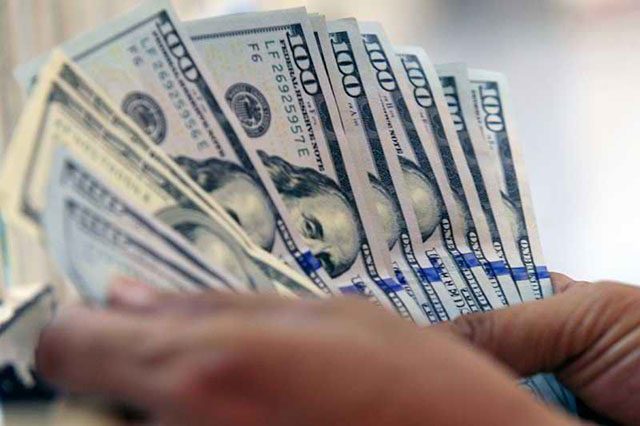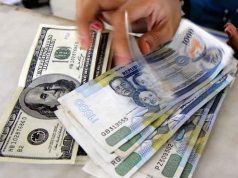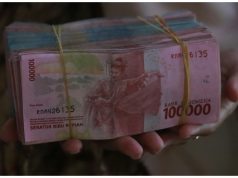- S.Korean won hits lowest level since March 2009
- Indian rupee hits lifetime low
- Thai baht down 0.3%, Chinese yuan near 13-month low
Most emerging Asian currencies weakened against a resilient dollar on Thursday while equities largely slipped in holiday-thinned trade, as investors focussed on the Federal Reserve’s rate outlook.
The South Korean won <KRW=KFTC>, which is among the worst performing Asian currencies this year amid domestic political turmoil and U.S. President-elect Donald Trump’s tariff threats, fell as much as 0.6% to its lowest level since March 2009.
The Thai baht <THB=> fell 0.3% and China’s yuan <CNY=CFXS> hovered near a 13-month low, not far from the psychologically important 7.3-per-dollar mark. The Indian rupee <INR=IN> dropped to a lifetime low.
Poon Panichpibool, a markets strategist at Krung Thai Bank, said the impact of Trump 2.0 policies could support the U.S. economy and keep the dollar strong under the “U.S. exceptionalism” theme, exerting more selling pressures on EM assets.
The won, baht and Malaysian ringgit are considered more vulnerable to Trump’s policies because of these countries’ export-driven economies and sensitivity to China’s growth.
Panichpibool said the Fed’s policy rate outlook was also significant because of its potential impact on Asian central banks’ monetary policy decisions and rate differentials between the currencies.
Last week, Fed policymakers lowered their rate cut projections for 2025 to 50 basis points from 100 basis points, and raised their inflation forecast.
Markets are now pricing in only about 35 basis points of easing for 2025, which sent U.S. Treasury yields surging, and the dollar to a near two-year peak.
Higher U.S. rates could create problems for emerging markets, including capital outflows, currency weakness, inflation and volatility.
The central banks in Indonesia,Thailand, and Taiwan kept rates steady last week to address currency and global economic uncertainty concerns, while the Bangko Sentral ng Pilipinas cut rates.
Among other currencies, the Philippine peso <PHP=> rose 1.1% and was on track for its best day since November 2023. The ringgit <MYR=>, the only Asian currency trading higher for the year, rose 0.3%.
Equities in Kuala Lumpur <.KLSE> gained 0.5%, while those in Manila <.PSI>, Singapore <.STI> and Bangkok <.SETI> lost between 0.2% and 0.4%.
Markets in Indonesia were closed for a holiday.
HIGHLIGHTS:
** World bank raises China’s GDP growth forecast for 2024, 2025
** South Korea opposition to vote to impeach acting President Han
** Japan says its economy likely to mark first positive output gap in 7 years
| Asian stocks and currencies at 0652 GMT | ||||||
| COUNTRY | FX RIC | FX DAILY % | FX YTD % | INDEX | STOCKS DAILY % | STOCKS YTD % |
| Japan | <JPY=> | +0.01 | -10.37 | <.N225> | 1.12 | 18.86 |
| China | <CNY=CFXS> | -0.07 | -2.76 | <.SSEC> | 0.20 | 14.29 |
| India | <INR=IN> | -0.08 | -2.42 | <.NSEI> | 0.14 | 9.34 |
| Indonesia | <IDR=> | – | -4.88 | <.JKSE> | – | -2.85 |
| Malaysia | <MYR=> | +0.34 | +2.71 | <.KLSE> | 0.54 | 10.79 |
| Philippines | <PHP=> | +1.13 | -4.49 | <.PSI> | -0.38 | 0.93 |
| S.Korea | <KRW=KFTC> | -0.50 | -12.07 | <.KS11> | -0.44 | -8.50 |
| Singapore | <SGD=> | -0.18 | -2.94 | <.STI> | -0.23 | 16.07 |
| Taiwan | <TWD=TP> | -0.17 | -6.08 | <.TWII> | 0.12 | 29.65 |
| Thailand | <THB=TH> | -0.29 | -0.15 | <.SETI> | -0.36 | -1.41 |
—Reporting by Aaditya Govind Rao and Himanshi Akhand in Bengaluru; Editing by Kate Mayberry and Subhranshu Sahu









